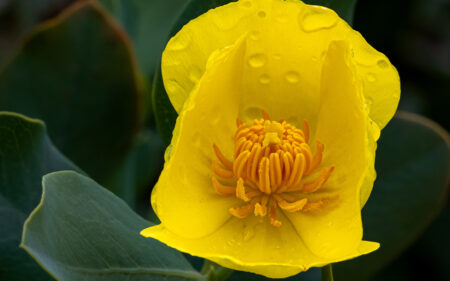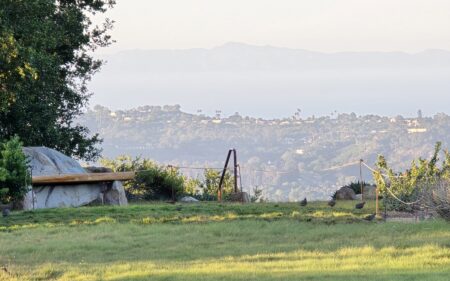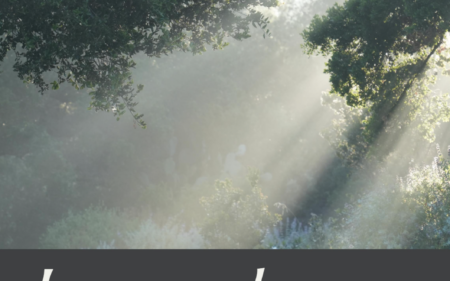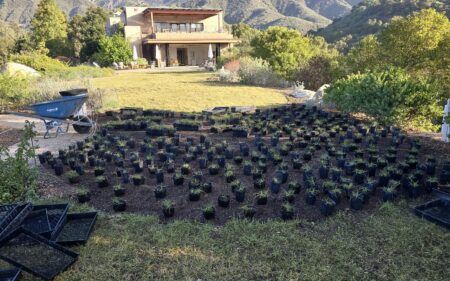La Colina Junior High: A Mission to Add Native Plants
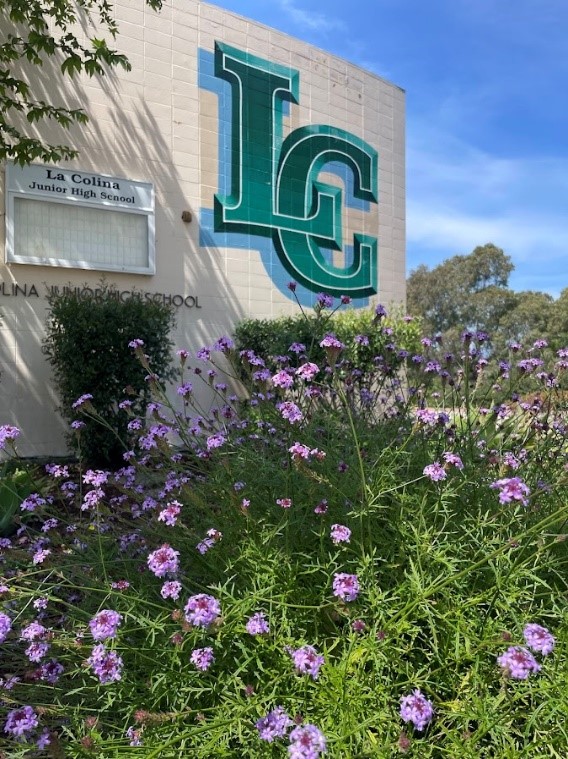
A lilac verbena (Verbena lilacina ‘De La Mina’) blooms as students are walking by, backpacks in hand, and the school bell signifying the start of the day. A monarch butterfly flutters by, attracted to the purple and clove-like scent of the flowers. A gentle reminder that we live amongst wildlife and must do our part to support their populations by planting and growing native plants.
La Colina Junior High is located on the corner of Foothill Road and the San Marcos Pass, adjacent to Cieneguitas Creek. Nestled aside this lush riparian and oak woodland habitat, the school is presented with a unique opportunity to connect and augment habitat by planting native plants.
It was a crisp December morning when Scot Pipkin, Santa Barbara Botanic Garden’s director of education and engagement, and I met with Maureen Granger, a teacher on special assignment. We were also joined by Carlos Contreras, the school’s gardener. Maureen shared with us her goal of adding more native plants to the school’s landscape, including a very visible planting bed in front of the main office. In creating these spaces, she wanted to connect the school community to the natural world. To help her bring this vision to life, we recommended planting a diversity of plants that would provide blooms and beauty at the beginning and end of the school year. This new landscape would provide a backdrop of habitat and flowers from the first days of school in mid-August all the way to graduation in June.
Imagine a backdrop of late-blooming Matilija poppies (Romneya coulteri) as students run home to enjoy the summer days. Picture the rust-colored seedheads of the California buckwheat (Eriogonum fasciculatum) in the early fall, when students were at the beginning of the school year. Perhaps if the beauty of native plants had been in the mix, junior high would not have been as angsty as was depicted in Bo Burnham’s coming-of-age directorial debut Eighth Grade (2018).
I’ve always thought the best way to inspire someone to believe in the beauty of native plants is to have good reference pictures and information. For that reason, my favorite tool for discussing native plants is the Native Plants for Southern California Garden flashcards. Equipped with pictures and a lot of horticultural information about some of the most common native plants in the trade, these flashcards are an excellent resource for anyone wanting more information on native plants. They’re also available in English and Spanish!
As we walked around the school with Carlos, alternating between English and Spanish, he was curious about the flashcards as he recognized a few of the plants. “Alejandro, me puedes dar consejo de como podar estas plantas,” Carlos asked as we started walking towards a different planting area with some existing native plants. He was asking for tips and suggestions for pruning some of the native plants in the planting beds. We discovered a mature specimen of manzanita (Arctostaphylos) living in the center of one bed. Standing about five feet, with a spread of six to seven feet, the manzanita was healthy, actively pushing new growth and getting ready to produce the pearly, white to pink urn-shaped flowers these spectacular plants are known for.
Carlos asked me how to prune the plant. I answered his question with another question, “Carlos, what do you notice about this plant?” He pointed out some dry branches on the shrub and young flowers. I asked him to think about when the plant typically blooms, who visits the plant, and what the plant is telling him. He responds by saying, “Winter, hummingbirds, and the plant is a slow grower.” I then encouraged him to start thinking about pruning with wildlife in mind. As the son of traditional gardeners, I know first-hand how frequently gardeners are tasked with shearing plants into a desired or controlled shape. The moment a plant seems to be growing out of place, we have been conditioned to “fix” it. I gave Carlos a big smile as he talked to me about how he would remove the dry branches and selectively prune the manzanita to reveal its cinnamon-colored trunk. After our visit, we provided Maureen and Carlos with a native plant assessment report, including a list of native plants that would be suitable for their site based on sun exposure, soil drainage and texture, and the school’s desired goals.
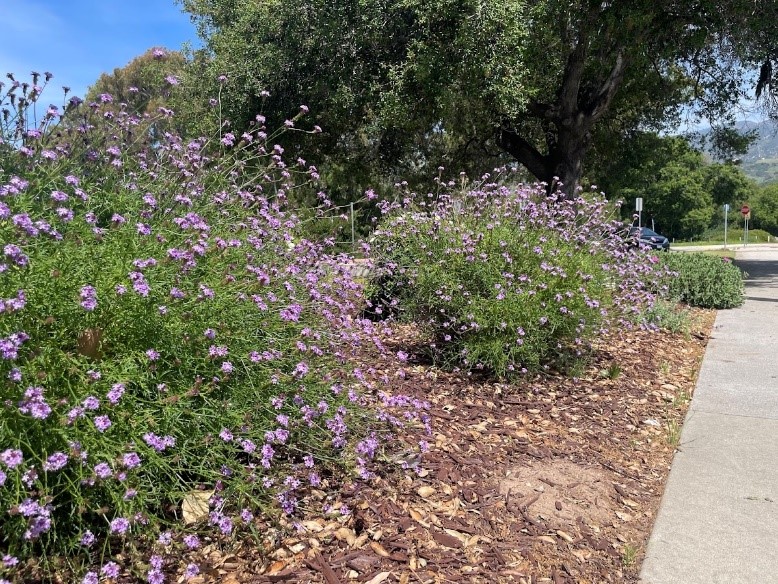
We were excited to help La Colina create a garden that would allow the school community to connect with nature. Since then, La Colina has hosted several campus beautification events where students, families, and community members gathered to weed, plant, and mulch areas in front of the main office and library, and both sides of the auditorium. Native plants from the Garden’s Nursery were planted to create habitat and add to the beauty of the existing planting beds. Notable plants including monkey flowers (Diplacus spp.) and showy island snapdragon (Gambelia speciosa) were chosen to brighten up the shady areas. California fuchsias (Epilobium spp.), deergrass (Muhlenbergia rigens), and buckwheats (Eriogonum spp.) were also selected to add late summer flowers and interest during the warmer parts of the year. Together, these plants increase the native plant habitat coverage of the school and create an outdoor classroom for students to learn about the basic principles of botany, pollinators, and much more.
As we begin thinking about how we can transform Santa Barbara’s landscape, it is important to remember we can harness the power of school spaces, residential gardens, and other public green spaces to increase the native plant footprint in our city. We are excited to partner with La Colina Junior High to empower students to learn gardening and propagation fundamentals. It is also important that landscapers such as Carlos participate in the California Native Plant Landscaper Certification, a 19-hour job training program with the goal of providing professional landscapers with the tools and knowledge needed for caring for native plant landscapes. The Garden is committed to providing the community with the information and resources they need for gardening with native plants. If you are interested in transforming your landscape, stop by our Nursery or look at our home consultation services available to you.
As a nonprofit, the Garden relies on your support to continue providing native plant resources to school programs like La Colina’s.

 Donate
Donate
